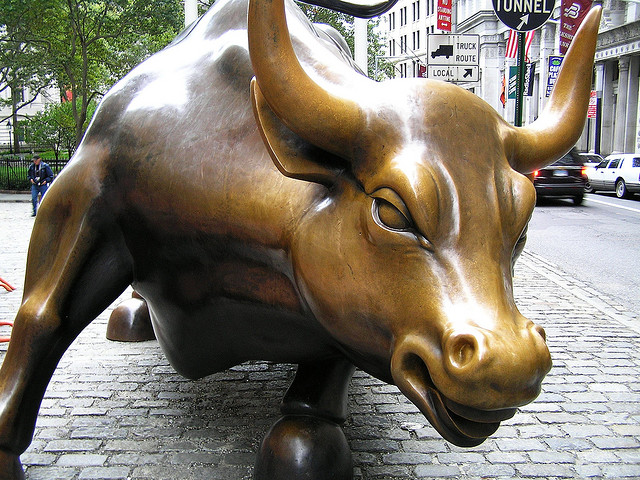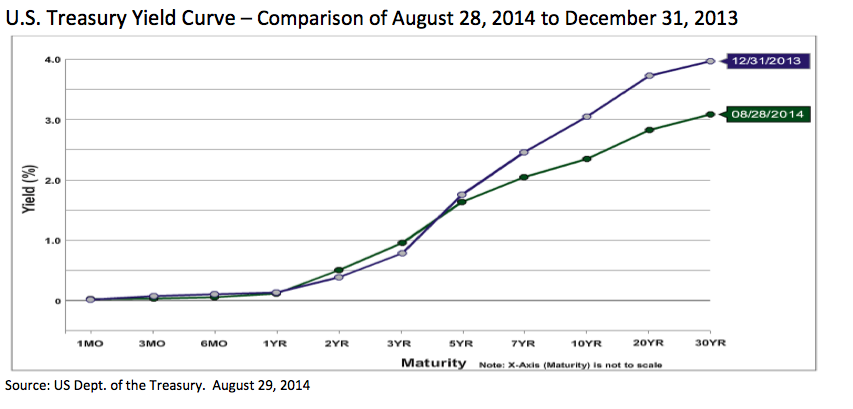As we wrapped up the summer season with Labor Day weekend, white pants and seersucker suits get put back in the closet.
Here in the Bay Area, that means it’s kick-off to football season and the final push for the San Francisco Giants and the Oakland A’s to go deep in post-season play. I hope everyone had an enjoyable summer, and for those in California we have a few more months of nice weather ahead.

Similarly, the outlook for the markets is pretty much that: better days ahead. Before looking ahead, let’s take a look at what the summer doldrums presented us. (The chart below shows stock market performance from Memorial Day to Labor Day.)
It’s been like a shuffle – a step forward, a half-step back, two steps to the right, and repeat.

Stealth Bull Market
As we started the month of August, the S&P 500 Index fell quickly. It was anything but certain what the month would hold. But things turned around on a dime, leading US stocks on their biggest one month gain since February.
The S&P 500 Index (SPX) advanced in August to above 2,000 for the first time and pushing the Dow Jones Industrial Average back above 17,000.
Earlier in August, the Dow was negative for the year, after previously hitting an all-time high in July. Small companies fared worse, but have rebounded nicely. With market indices hitting new highs, you’d think there’d be a more celebratory tone to the market. However, in my opinion, it’s more like a stealth bull market that no one believes in, portending more upside ahead.
The rationale for the rebound? Of course more buyers than sellers. As markets have stabilized from frothy July gyrations, investors appear to be recommitting to stocks. We continue to see tangible evidence of economic acceleration in the US, confirming that the second half of the year should be stronger than the first.
Second quarter earnings were supportive of valuations for many companies, while more importantly third and fourth quarter corporate outlooks are trending higher as are GDP forecasts. (According to the most recent Wall Street Journal survey of 50 economists, GDP is forecasted to grow 2.9% in the 3rd quarter and 3.0% in the 4th.)
Ironically what’s driving gains domestically and in Europe are completely opposite. European stocks have risen despite slowing euro-area economies headed towards recession again. Investors have put a “bad-news-is-good-news” spin on further weakness in hopes it might lead to more aggressive action by the European Central Bank (ECB).
The central bank delivered at its most recent policy board meeting by cutting interest rates and embarking on a program of bond purchases.
Fed will move carefully
Risks? Capital market will continue to wrestle with a series of counterforces (insurgents and jihadists too) and lingering geopolitical risks. For now, low rates and an improving US economy are besting rich valuation metrics in some corners of the market allowing stocks to move higher.
Sometime next year it is expected that the Federal Reserve will start normalizing (raising) interest rates. While this process will likely commence in spring or summer of 2015, rates are still likely to remain relatively low in my opinion. I also believe that even when the Fed starts normalizing rates, taking the Fed funds rate from 0.25% to possibly 2.0% in 2016, that will be dramatically lower than where rates were prior to the 2008 crisis.
How should investors position for a rate hike? While longer-term interest rates have remained stable, the prospect for an early Fed tightening is pushing pressure on the prices of shorter-maturity Treasury bonds, particularly those in the 2-5 year maturity range, pushing yields higher (yields and prices move inversely).

Mighty U.S. dollar
In addition to short maturity bonds, another asset class that is proving vulnerable to rising rates is commodities. The prospect for tighter monetary conditions is driving the dollar higher and putting downward pressure on many commodities.
Stronger economic data and the prospect for tighter monetary conditions has pushed the US dollar to its highest level since last September. Along with a stronger dollar, the potential for higher real (inflation- adjusted) rates and a declining geopolitical risk premium has tamped down gold prices and agricultural Commodities. Many agricultural commodities are down between 5% and 10% year-to-date with corn down nearly 20%, and oil prices have slid on lessening Middle East unrest.
All of this suggests that traditional safe haven assets such as shorter-term US Treasuries and gold may, in fact, be more vulnerable than stocks in the near term. Although not cheap, stocks have the tailwinds of still low rates and improving economic conditions at their back.
So what lies ahead, most importantly for US investors? I have no way of knowing for sure, but in my opinion 2,000 on the S&P 500 will act as a new resistance level in the short-run.
September has historically been the worst month on the calendar for stocks, but I don’t see it this year. The current domestic investment backdrop is benign, and mid-term elections haven’t become too contentious yet and don’t look to seriously change the status quo in Washington. Obviously, wild cards always exist be it Russia/Ukraine, Europe, or the Middle East. These exogenous forces, if they were to tamp down equity returns, are typically short-lived.
Staying power
Fear not, in the long run the bull market isn’t over. It’s just that this juncture investors, not having experienced a 10% correction in 3 years, are looking for signs of a top in the market in order to time their exit. As Peter Lynch, renowned portfolio manager of Fidelity’s Magellan Fund in the 1980s, said deftly, “Far more money has been lost by investors preparing for corrections, or trying to anticipate corrections, than has been lost in corrections themselves.”
Most investors should stick with their stock allocation that was appropriate for them at the beginning of the year or at any other time. Equities should constitute a large portion of investors’ portfolios for long-term investing (10+ years). In today’s environment, high quality bonds, CDs and money market funds just can’t offer enough income for one to live on in retirement.
—
Disclaimer: All investments involve risk and various investment strategies will not always be profitable. Neither the information nor any opinions expressed constitutes investment advice and is not intended as an endorsement of any specific portfolio manager. Past performance does not guarantee future results.
Photo credit: herval via Flickr Creative Commons

